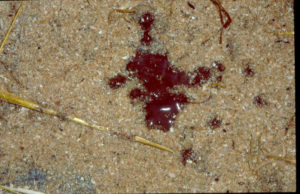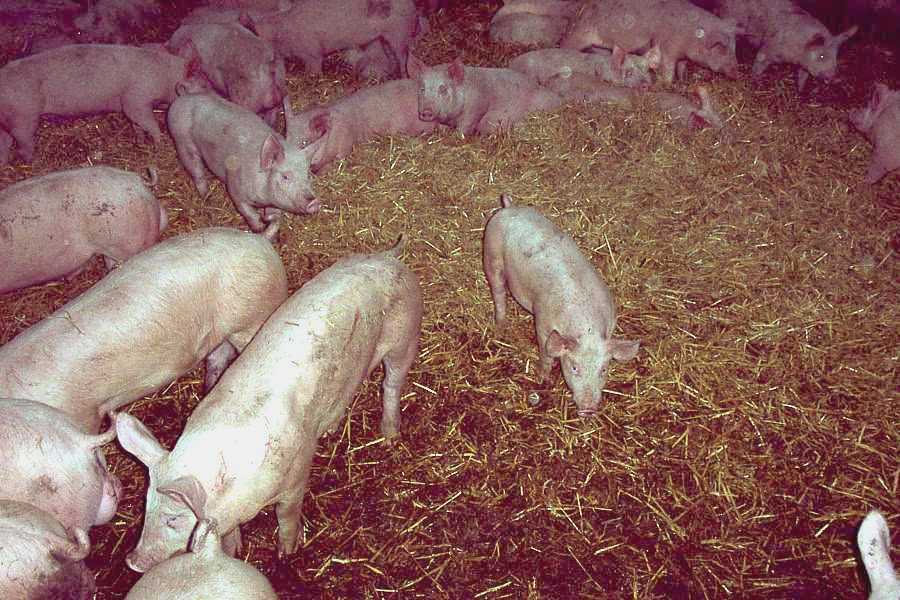Swine Dysentery – The Key Facts
5 June 2019Swine dysentery is a serious bacterial infection of pigs that causes diarrhoea, deaths, reduced growth rates and poor productivity. It has made an unwelcome return to Scotland and has been diagnosed on several units during spring 2019.
The disease is caused by a bacterial organism called Brachyspira hyodysenteriae. Infection can be introduced to units by a number of sources including:
- carrier pigs
- bringing infected material onto farms accidentally, e.g. via dirty lorries, boots, equipment etc.
- Vermin and birds can also carry infected material from farm to farm.
 Pigs get infected through oral intake of infection with the bacteria colonising the large intestine and multiplying to form large numbers of bacteria. Infected pigs show diarrhoea that is grey/brown in colour initially, with a runny or watery consistency. As the infection progresses, mucus and sometimes fresh-looking blood can be seen in the faeces. Infected pigs will look unwell, have a reduced appetite and severely affected pigs die.
Pigs get infected through oral intake of infection with the bacteria colonising the large intestine and multiplying to form large numbers of bacteria. Infected pigs show diarrhoea that is grey/brown in colour initially, with a runny or watery consistency. As the infection progresses, mucus and sometimes fresh-looking blood can be seen in the faeces. Infected pigs will look unwell, have a reduced appetite and severely affected pigs die.
Outbreaks of diarrhoea need to be investigated to diagnose the cause and get the correct treatment and control measures put in place. It is important to contact your vet at the early stage of outbreaks. As there are no vaccines available for swine dysentery, antibiotic treatment and the correct management procedures are needed to contain the infection and minimise the impact of the disease.
The disease can be eradicated from sites by total depopulation, cleaning and disinfection or partial depopulation, cleaning, disinfection, robust management and biosecurity planning under veterinary direction. Sheds and equipment must be allowed to dry thoroughly.
The importance of good biosecurity cannot be understated:
- Bought-in pigs should come from a swine dysentery-free source. Purchasers can ask for completion of the QMS Health Declaration form by suppliers to confirm the health status of the supply herd. Incoming pigs should be isolated for 4 weeks before introduction into the main herd. Use separate boots, clothing and equipment for pigs in isolation and either separate staff or careful hygiene measures in keeping with good quarantine principles. Should diarrhoea occur in pigs in quarantine, your vet should be notified and samples taken for testing.
- Lorries coming to the unit are a significant risk, especially if part-loaded. Having a loading bay well away from the unit, and good loading bay management are essential. Supply clean boots for the driver, and clean/disinfect the loading bay after use.
- Supply boots and coveralls for visitors along with standard biosecurity recommendations.
- After discussion with your vet, suspicion of swine dysentery should be reported to the Scottish Pig Disease Control Centre, in accordance with the QMS Pig Health Charter. This allows the SPDCC to assist with transport and other arrangements to minimise the risk of disease spread as far as possible. Once test results are received, the report should be updated to either positive or negative, as advised by your vet.
Taking action to diagnose and control swine dysentery as quickly as possible will help to minimise the impact on your pigs and prevent accidental spread of infection to other herds. Ensuring all staff and visitors observe biosecurity and remain vigilant are also key to ensuring that Scotland once again is free from this disease.
Jill Thomson and George Chalmers
Sign up to the FAS newsletter
Receive updates on news, events and publications from Scotland’s Farm Advisory Service

